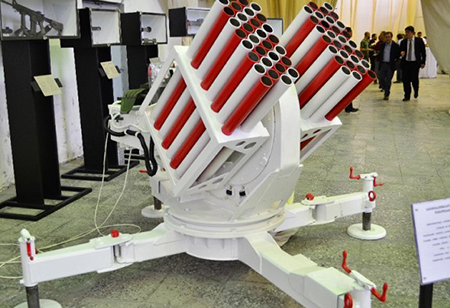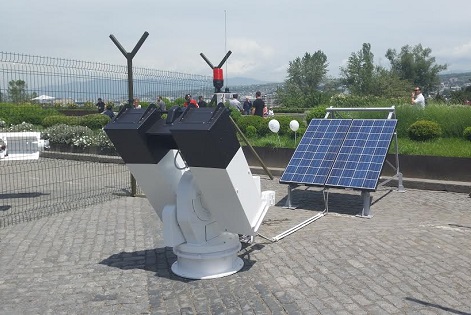Anti-hail nets aid farmers in wine-making Kakheti region

Farmers in eastern Georgia’s famous wine-making Kakheti region will no longer have to worry about losing their crops to hail thanks to the installment of anti-hail net in the area.
The new nets, being installed by the Government, aimed to reduce hail damage on crops by almost 95 percent.
The state allocated about 15 million GEL to the project. Installation of the nets was expected to continue until spring and the new system will begin functioning in summer.
DELTA, the country’s Military Scientific-Technical Centre was in charge of the hail suppression works in Kakheti. In order to protect the whole region, DELTA selected 85 launching points – one every 10 km – in Kakheti.

The anti-hail net system included a rocket launching device, solar panel, grounding and security systems installed at each launching site. The launching device will carry 24 anti-hail rockets, which can be aimed in any direction and fired.
Authorities said the aim of hail suppression works were to dramatically reduce the damage caused on crops by hail storms, reduce the size of the hail or change them into raindrops by dispersing a special reagent (silver iodide) in the clouds before the hailstones are formed.
The Anti-Hail System consists of:
- A weather radar with special software;
- A central control station, located in Tbilisi;
- An automated fire control system;
- Rocket launching sites;
- Rocket launching devices - SD-56; and
- Anti-hail rockets.
How it works:
The weather radar is a C-band, dual polarized Doppler radar, which generates data to predict hail-producing thunderstorms. Information gathered from the radar, plus the databases of hail-consisting clouds, are used by the software, using specific algorithms, to determine areas where the silver iodide reagent needs to be dispersed.
The central control station is an off-site facility where information from the weather radar and rocket launching sites are gathered, processed and where the automatic fire control system is placed. The automatic fire control system receives data and uses this information to define the optimal launching site and determine the number of rockets needed, then sends this information to the rocket launching devices.
The anti-hail rocket is an unguided, 60 mm rocket, which has the capacity to carry 50-70g of silver iodide reagent. This compound will be dispersed at an altitudes of 2.5-4.5 km above ground for 30-35 seconds. The estimated number of rockets needed in a 12-month period is 5,000 units.
Why it was needed:
Hail has always been a major issue for people in Kakheti. Every year a large portion of the agricultural sector, particularly grapes, are damaged beyond repair by hail, leaving farmers with no crops.

Huge hailstones caused major damage for farmers in summer 2012. Photo by Kakheti Information Centre
The latest largest hail storm in Kakheti was recorded in July 2012 when 100 percent of all crops were destroyed in several villages of the region. Furthermore, hundreds of houses were left without roofs and many cattle died.

The harvest was almost fully destroyed and many farmers had to take bank loans to get through the tough time. Photo by Kakheti Information Centre
What will change?
DELTA spokesperson Tamar Gvarishvili told local journalists the new system would decrease the damage caused by hail by 85-95 percent.
Georgia’s Agriculture Minister Otar Danelia said the new anti-hail equipment would see Agro-insurance tariffs be revised.
President of the Georgian Insurance Association Devi Khechinashvili also suggested that agro- insurance would become cheaper as the installation of the anti-hail nets would decrease the risk of rainfall.
 Tweet
Tweet  Share
Share
















